Phonics games in the classroom are one of my favorite ways to practice spelling rules! I’ve always loved to play games, so sharing my love for games with my students comes easily. Plus, the word game adds instant engagement and interest.
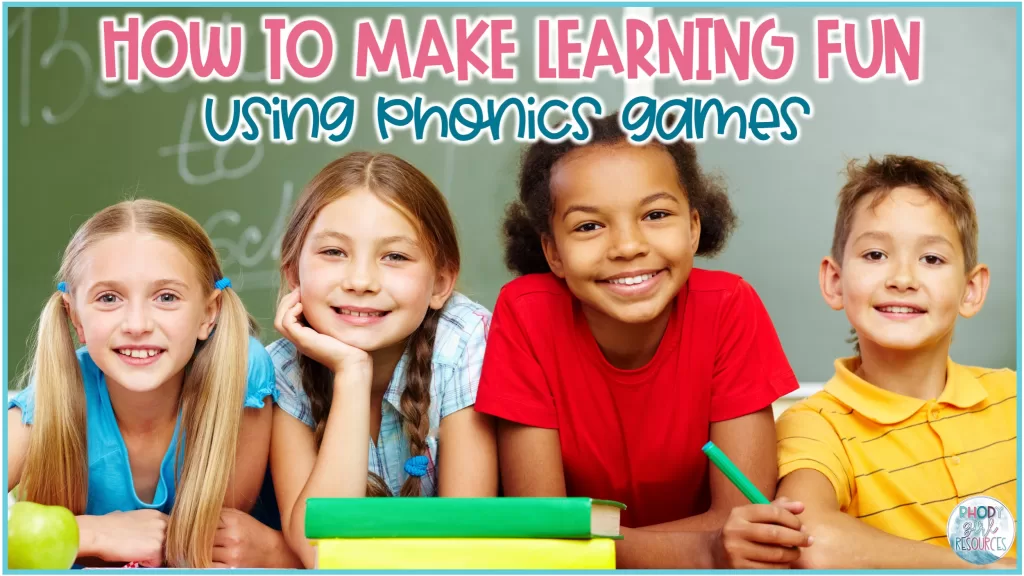
Explicit phonics instruction is necessary to help students learn to read. After introducing new phonics patterns, review and practice are key to supporting mastery. Phonics games are a great way to do this.
When to Use Phonics Games in the Classroom
Phonics games can be played in a variety of ways. Play with your whole class, in small groups, or during a center. They work well for intervention, enrichment, and general instruction. I typically introduce phonics games to my whole class or a small group. Once they understand how to play, I add them to our literacy centers or use them for early finisher activities.
Getting Started With Phonics Games
The great thing about using games in the classroom is their adaptability. Once your students understand how to play the game, you only need to change the words/skill to keep it fresh and exciting.
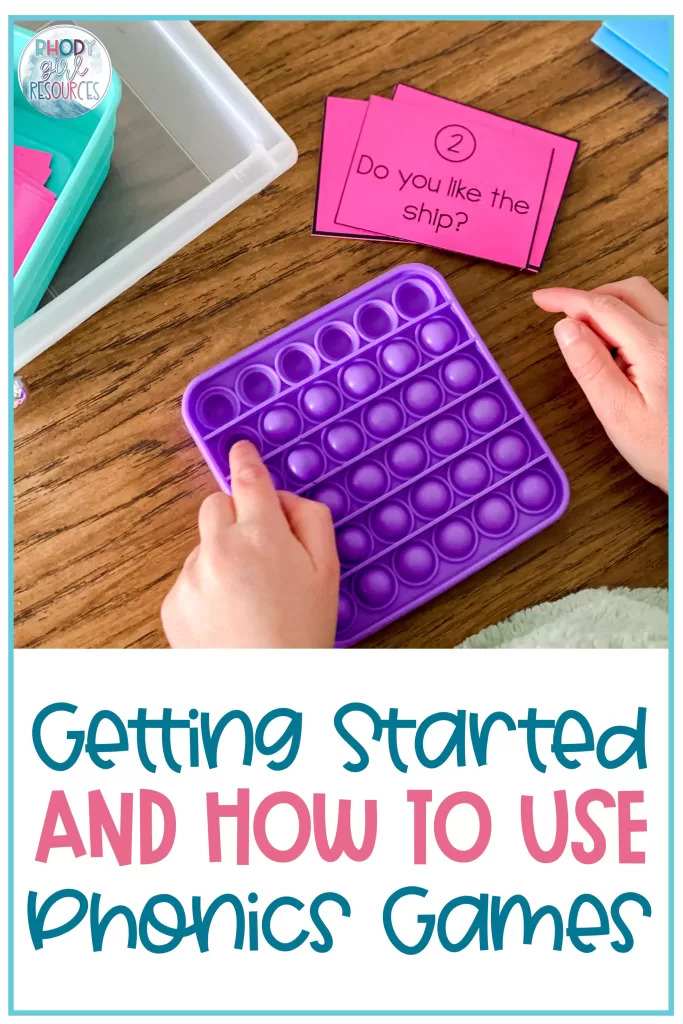
How to Play Phonics Games
Phonics games can be played in 4 different ways. Each set focuses on different skills, including letter identification, beginning sounds, CVC words, blends, and more, making differentiation easy!
Fidget Popper Game
To play, students need a fidget popper and the included playing cards. Each playing card shows a number at the top and then a word/sentence or picture. Students will take turns flipping cards and completing the task. If there is a word or sentence, the students will decode and read it. Cards with pictures require students to encode and work on spelling or writing words. If they complete the task correctly, they pop the number of bubbles shown on the card. The student who pops all the bubbles first or the most in the designated time wins!
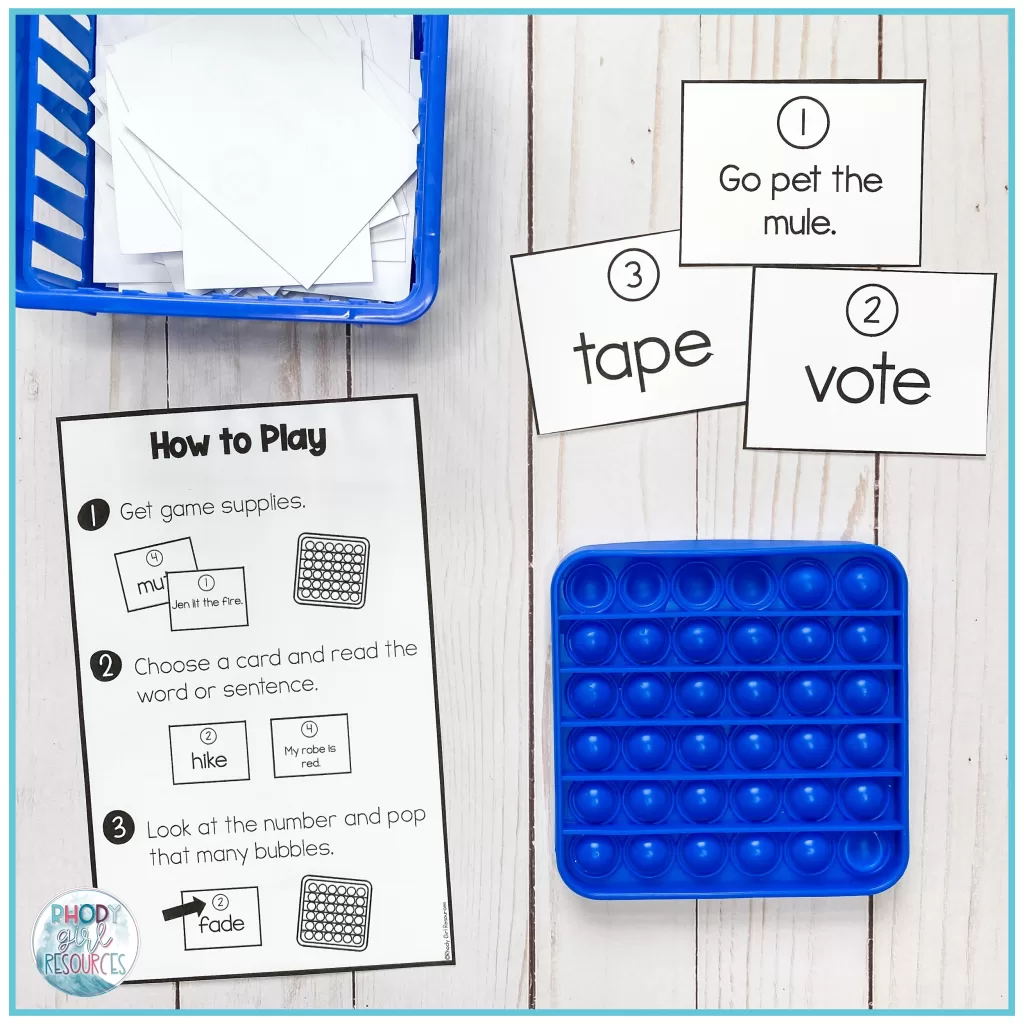
Poppers come in all shapes and sizes. Changing the popper is an easy way to differentiate and build interest and engagement. You can find poppers almost everywhere! Try searching online for “fidget popper” on Amazon or check out the toy section in Target, Walmart, or other stores.
Race to Fill
Playing this game, you will use the same numbered cards, a grid, and manipulatives. When students correctly read/spell the word, they will place that many manipulatives onto their grid. The winner is the player who fills their grid first or covers the most spaces.
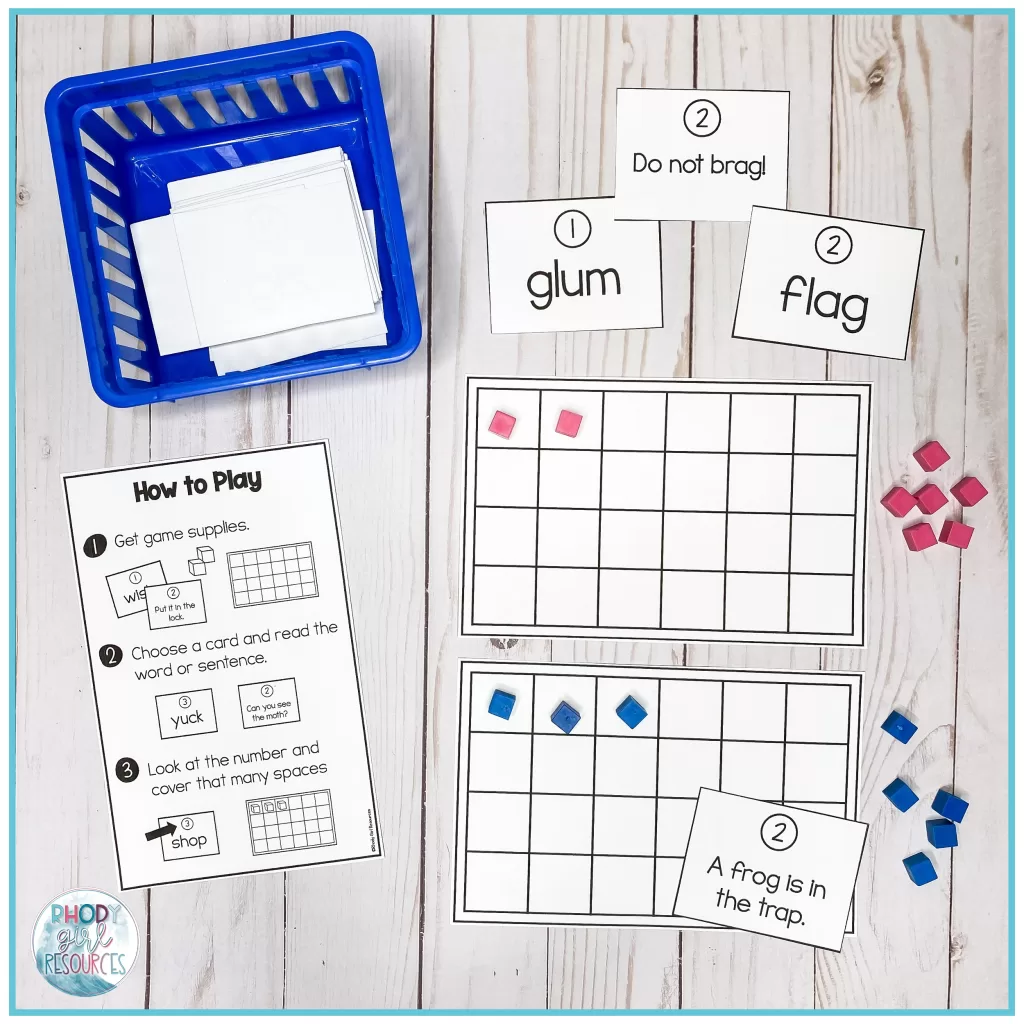
Any small manipulative will work for this game. Mini erasers would be great because they are affordable, and you can change them throughout the year! You can integrate math by having them use coins or filling ten frames instead.
Board Game
Use the game board template as another way to play. Students will put their game pieces on the start. Next, they will flip a card and read the word/sentence. If they can read it correctly, they can move the number of spaces on the card around the game board.

Do you have any old board games lying around? They will work great, too, for this version. Goodwill, Savers, or garage sales are great ways to find affordable used games. Use the game boards or game pieces with these cards for a different twist!
Chomp or Roar!
This version of the game only requires cards. The cards used do not have any number value. In addition to the word/sentence cards, special cards showing a shark that says “chomp” or a lion that says “roar” are mixed in. All the cards are placed in a pile or inside a container. Students take turns pulling a card and reading what they see. If they can read it correctly, they get to keep the card.
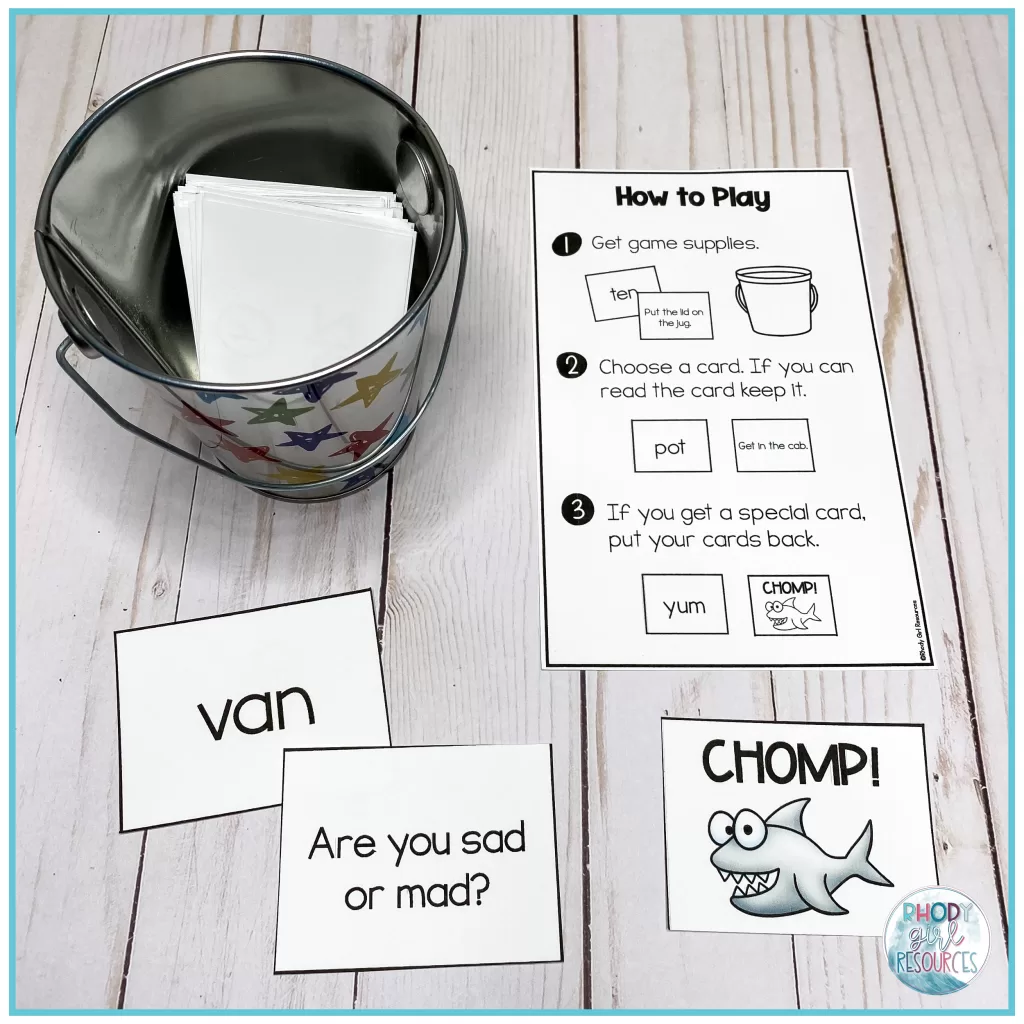
When a special card is pulled, the player must return all of their cards. The player with the most cards at the end is the winner.
Encoding and Decoding Through One Game
Students practice decoding as they read the sentence or word cards. Picture cards can also be used to support encoding. When students get a picture card, they write or say the letter that spells the beginning sound or word pictured before they pop, move, etc.
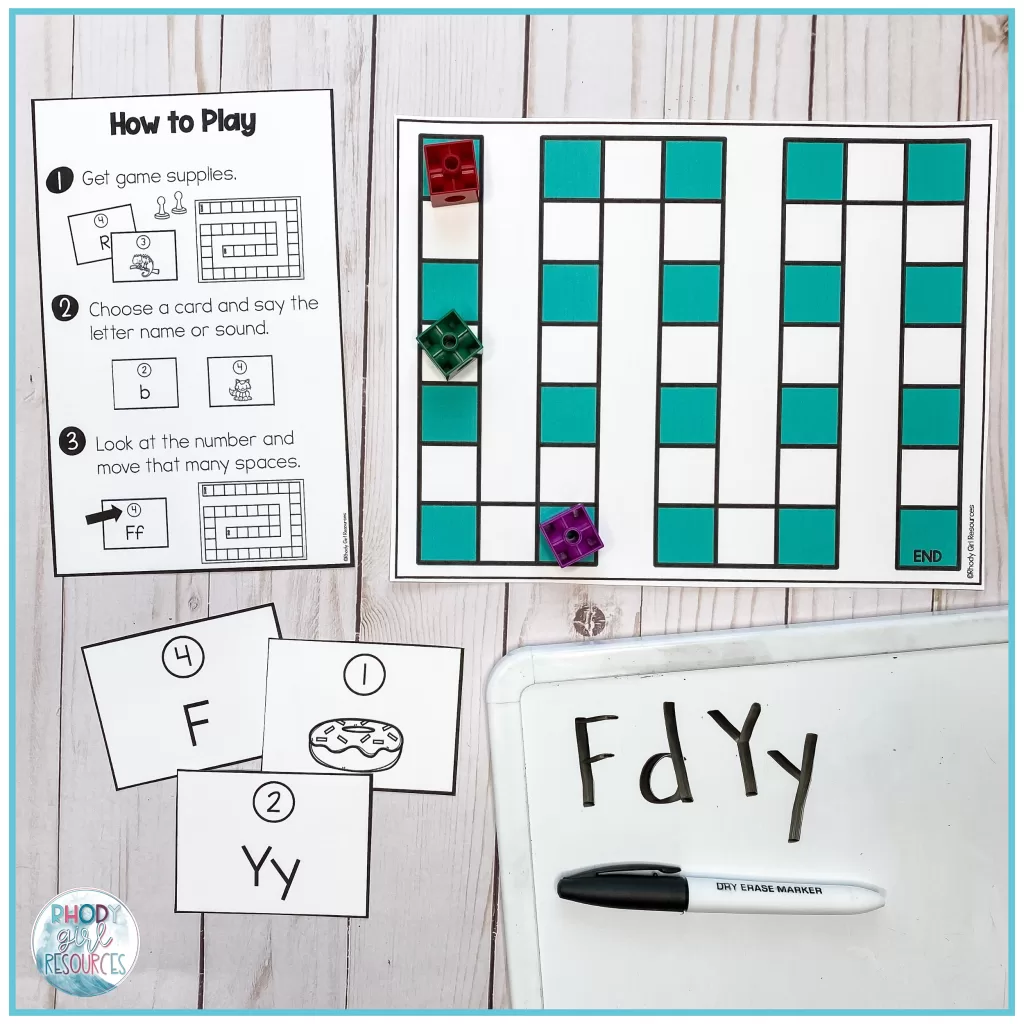
Phonics games in the classroom will create excitement toward learning and reading. They are low prep, and once your students learn the directions, they can play completely independently, leaving you free for intervention, enrichment, or assessment!









